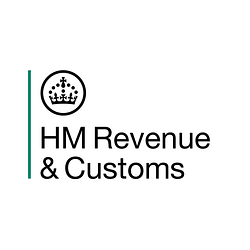
Press release -
HMRC victory on stamp duty dodge
Regulations have also been laid that will force users of a wider range of stamp duty land tax (SDLT) avoidance schemes to disclose them to HMRC.
The new rules will give HMRC much better access to information about these avoidance schemes and those who promote and use them. They can then be challenged and closed down more quickly.
HMRC’s Director General of Business Tax, Jim Harra, said:
“This victory at the First Tier Tribunal sends a clear message to tax avoiders that we will challenge avoidance relentlessly. The decision is good news for the vast majority of taxpayers who pay, rather than try to dodge, their taxes. It shows that the courts will see through arrangements which are put in place just to avoid tax.
“People who are tempted by tax advisers to enter into avoidance schemes should think twice and not be driven by greed into signing up for schemes that are just too good to be true.”
Exchequer Secretary to the Treasury David Gauke said:
“This Government has been clear that when someone buys a house in the UK they must pay Stamp Duty. At the Budget we announced a number of steps that we are taking to crack down on people who try to avoid this responsibility. Today’s legislation will mean that HMRC will have access to more information about property tax avoidance. They will not hesitate to use it to close down avoidance schemes.
“The Government is totally committed to tackling this kind of tax avoidance scheme and HMRC will take cases through the courts whenever necessary.”
Notes for Editors
Vardy: 15 and 16 March 2012 and 1 and 2 May 2012.
The case involves an aggressive SDLT avoidance scheme which a number of accountancy firms have been promoting.
A company in the Vardy group wanted to acquire property costing £7.25 million, a direct purchase of which would have incurred SDLT of £290,000. Instead, the group structured the purchase through a newly formed unlimited company, which immediately distributed the property as a dividend to the shareholder company.
The group argued that SDLT rules looked through the unlimited company’s purchase; and since the final purchaser had paid nothing for the property it was not liable for any SDLT.
However, the First Tier Tribunal found that the unlimited company had not properly carried out company law requirements for declaring a dividend, and that in reality the ultimate owner of the property had indirectly provided the purchase price. For either reason, the avoidance scheme failed and the SDLT was due.
The decision defeats a widely-marketed scheme used by homebuyers and others who have tried to get out of their responsibility to pay SDLT.
Disclosure of Tax Avoidance Schemes regulations
The new regulations will:
- ensure that in future both promoters and users of SDLT “subsale” avoidance schemes have to disclose them to HMRC, even if this hasn’t always been the case in the past, and
- ensure that SDLT avoidance schemes that involve residential property with a value up to £1 million and for commercial property with a value up to £5 million have to be disclosed, in the same way as schemes involving more valuable properties.
This will make it easier for HMRC to identify those people who try to avoid paying SDLT on property purchases and to challenge the schemes. It will also enable the Government to take early legislative action to stop SDLT avoidance schemes, where necessary.
The disclosure rules currently
- do not require users to disclose schemes that were promoted prior to April 2010 if the promoter disclosed them previously.
- exclude from the requirement to disclose
– schemes involving residential properties below £1 million in value and commercial or mixed property below £5 million in value, and
– schemes that were promoted before April 2010 and not disclosable at that time.
Some promoters are still marketing subsale avoidance schemes, including for lower value properties beneath the current thresholds.
The Government wants to make sure anyone using these avoidance schemes has to notify HMRC so that they can be identified and challenged. The First Tier Tribunal decision shows how HMRC takes legal action to defeat such avoidance schemes.
Follow HMRC on Twitter @HMRCgovuk
Images are available on HMRC’s flickr site www.flickr.com/hmrcgovuk
Related links
Topics
Categories
Issued by HM Revenue & Customs Press Office
HM Revenue & Customs (HMRC) is the UK’s tax authority.
HMRC is responsible for making sure that the money is available to fund the UK’s public services and for helping families and individuals with targeted financial support.

